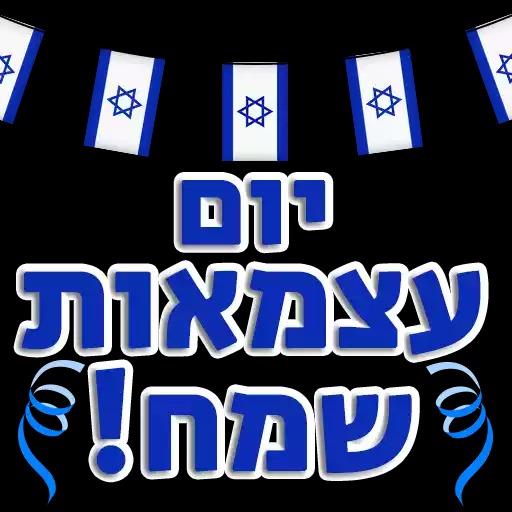
Independence Day
The State of Israel is celebrating its 73th year of independence this week (April 14 eve-15 in 2021), which is always preceded by a very sombre Memorial Day – Yom Hazikaron. This year we memorialized the 23,928 soldiers that fell in defending the State. The dramatic events leading up to the Declaration of the State of Israel on Friday, the 5th of Iyyar 5708 (corresponding then to May 14, 1948), are too many to discuss here. But here are 10 quick facts that you may not have known from other sources – unless you already visited Israel’s Independence Hall, currently undergoing major renovations. This is just a selection of my favorite tidbits:
1. The Provisional Council (the pre-state quasi-government) only voted to declare independence on May 12 – just two days before the declaration. David Ben Gurion, the head of the Council, said, “It’s now – or never!” The vote was 6 in favor and 4 against (there were three other members of the Council who could not attend: two were under siege in Jerusalem and one was abroad). That was a close call!
2. Although the British were only set to depart on Saturday, May 15, the Provisional Council knew that it would be impossible to hold a ceremony declaring independence on Shabbat (the Sabbath), so they set the time for Friday at 4:00pm, just a few hours before Shabbat was to start, and 8 hours before the official end of the British Mandate. People were asked to come at 3:30 and the ceremony started precisely at 4:00 (yes, it actually started on time!).
3. It would have been most appropriate to announce independence in Jerusalem, the historic capital of the Jewish people; however, city was under siege by local Arab militia. Consequently, it was decided to hold the ceremony at what had been the art museum of Tel Aviv since 1936. Prior to that it had been the private home of Meir Dizengoff – the first home built in the new “neighborhood” of Tel Aviv. In 1911 Dizengoff became the first mayor of Tel Aviv. Outside the Hall of Independence is a sculpture of Dizengoff riding his female horse, so there is Mayor Meir on his mare!
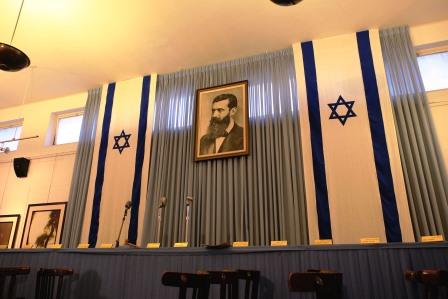
4. The art museum was chosen because the main hall had high windows and the room could have served as a makeshift bomb shelter, in case the Arab countries would attack that day. The museum didn’t have enough chairs for the some 250 people who were invited to attend the ceremony. So, on Friday they had to run around to local cafes asking to borrow chairs!

5. They knew they would need amplification for the ceremony, so they turned to a store called “Tzlil” (literally: sound or tone) and asked to borrow a microphone and amplifier. The owner generously said that he would donate the equipment – on the condition that the name of his store appear on the microphone. Thus “Tzlil” became the first advertisement in the new State of Israel! (Left: see the writing on the microphone next to David Ben Gurion)
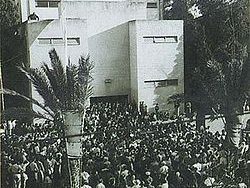
6. Invitations had to be hastily hand-delivered to some 200+ people. The invitation said that it was classified and that the invitees should keep the contents of the invitation secret! (See the photo – right – of the throngs of people waiting outside during the Declaration!).
7. The text of the Declaration of Independence wasn’t finalized until an hour or so before the ceremony. Ben Gurion was busy making corrections practically on his way to the ceremony! A fancy parchment had been prepared – but it was blank! Ben Gurion read the Declaration from the type-written, correction-riddled pages, hidden by the parchment! Those that were asked to come up and sign the Declaration following the ceremony did so on blank parchment!
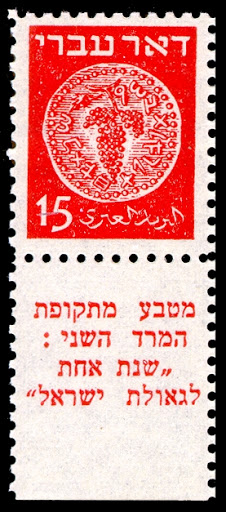
8. The name of the new state was not announced prior to that Friday, which is why there was such a rousing applause during the declaration ceremony when David Ben Gurion (who became prime minister) announced that the new country would be called: “The State of Israel.” Among other names that had been suggested were: Judea, Zion and even Eretz Yisrael (the Land of Israel). But all of the trappings of a new state had to be put into motion even before the declaration. Not knowing what the country would be called they had issued postage stamps that read: דואר עברי “Do’ar Ivri” or “Hebrew Post”! (See picture, left)
9. There were only two women who signed the Declaration parchment: Rachel Cohen-Kagan (who became a member of the first Knesset/Parliament) and Golda Meyerson, who later Hebraized her surname to Meir – destined to serve as prime minister of the State, 1969-1974. (In the picture below, one can see a partial profile of her, sitting in front of the third man from the right at the dais). Golda Meir cried through much of the ceremony. When asked if she had been crying because she was overwhelmed with excitement, she is purported to have responded that she was crying for the 6 million Jews for whom the State of Israel was declared a few years too late.
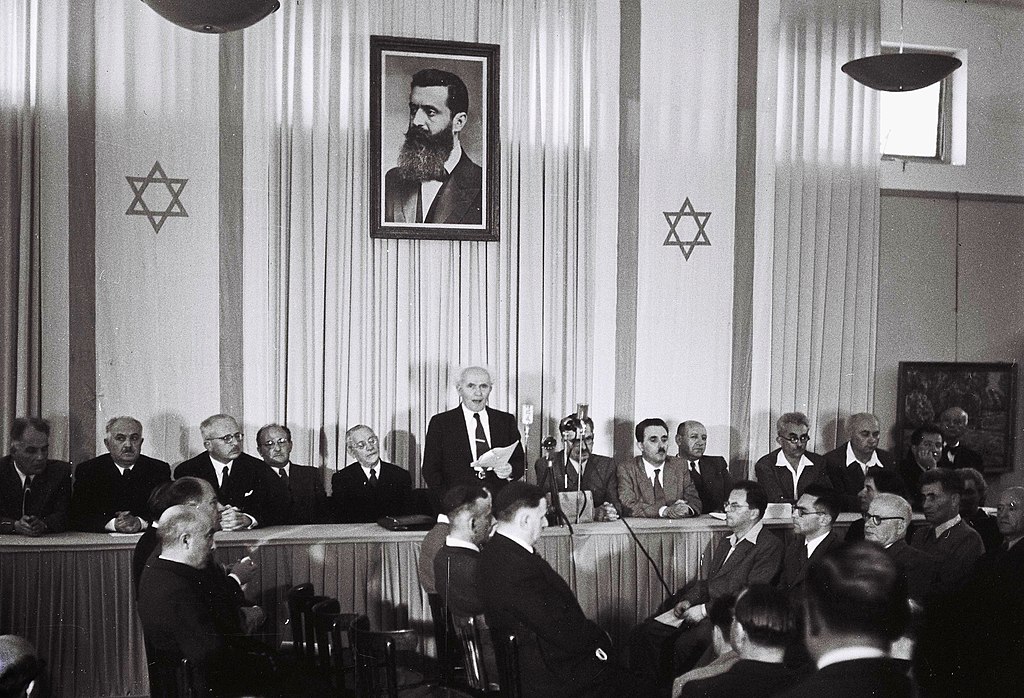
10. In the crowded room there wasn’t enough space for the orchestra, which had to be placed one floor above the hall. When Ben Gurion called the meeting to order, someone had to run upstairs to tell the orchestra to start playing Hatikva -“the Hope,” which was later adopted as the national anthem of the new State of Israel.
Yom Ha’atzmaut Sameach! יום העצמאות שמח
Happy Israeli Independence Day!